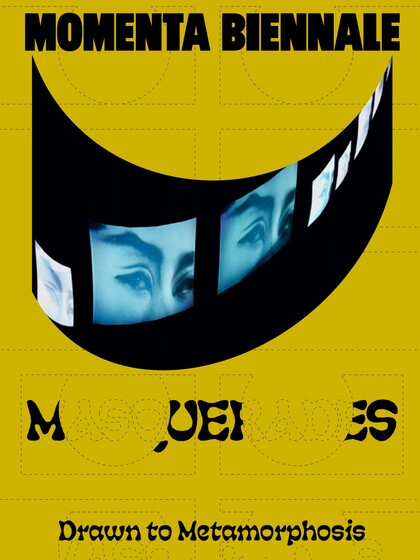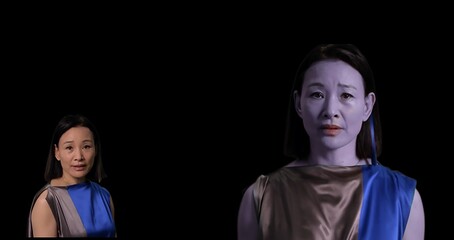Group Exhibition Montreal Museum of Fine Arts, Montreal, Canada
We’ve all experienced that gap between who we think we are and how others perceive us. We’ve all felt the friction between the identity assigned to us and the one we construct for ourselves. We: that is, you and me—as well as others, human or not. Starting from this premise, MOMENTA 2023 will explore the dynamics of visibility and invisibility that shape representations of the self and the other. Individuals are constantly recorded, formatted, fixed as same and identical, so here’s the urgent question: how do we (re)set in motion our understanding of identities and differences in the social space and in intimate experiences of otherness?
The notion of mimicry serves as the main driving force for developing the biennale. Mimicry designates the aptitude to “do as if”: to imitate (do the same), which involves first and foremost the capacity to transform (unmake) oneself by blurring the borders that define the edges of beings and things. Transversally, mimicry concerns human behaviour, the experience of all living things (animal and plant mimicry), and technological modelling (machine- learning mimicry). It situates us in the interstice between the self and the other, linking them and leading them to melt into one another. It is precisely the potential for metamorphoses inscribed in this interstice that MOMENTA 2023 wishes to embrace with the title Masquerades.
The image has a decisive role to play in these operations of mutation, of exposure and concealment, of separation and fusion. It is an ideal tool for seeing, experiencing, and testing perceptions of the self. The theme of mimicry thus calls for an exploration of the theatricality and virtuality of the mask, whose performance is facilitated and stimulated by technical images. In this sense, the biennale will pay particular attention to the moving lines that today are redefining gestures of appropriation and disguise: how are identities played and outwitted? And who can make light of the spectacle of identity?
Beyond its function of representation, the image is also an agent of mimetic metamorphosis. Doing like the other, taking oneself for another, or seeing oneself as another is to “become image.” In a reality that seems to be precisely devoured by images, mimicry takes on a unique importance, as borne out in camouflage strategies that have emerged to cope with generalized institutional and corporate surveillance. As a consequence of the demand for the right to invisibility and anonymity, the face—a fundamental aspect of identity—is erased, replaced, or even disfigured. Might this not also be the expression of a more ambiguous desire to “blend into the background”?
The disruption of perception, especially visual, is at the core of mimetic scenarios. Who is looking at whom in my encounter with a chameleon, a stranger, an artificial intelligence? What about the feelings of incongruity, immersion, sinking, and vertigo, or even intoxication, produced by mimicry? The biennale will create a dialogue among artists whose works seize on these operators of ambiguity and of entangled gazes. The exhibitions will provide a fresh look at the issues involved with mimicry and the alteration of identities by exploring the functions of the image, between representation and metamorphosis. Beyond the instability of identity that is thus brought to light, might these intersubjective experiences lead us to reimagine our commonalities and what creates a sense of community?



